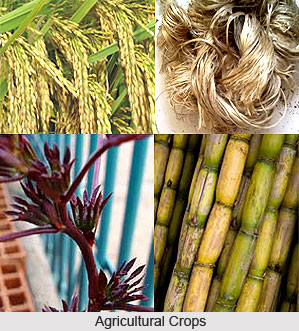 Dinajpur, at the northern part of West Bengal is not economically sound and the very basis of its economy is the forest resources, which abound in plenty. The humid tropical climate induces the rapid growth of the mixed deciduous forest.
Dinajpur, at the northern part of West Bengal is not economically sound and the very basis of its economy is the forest resources, which abound in plenty. The humid tropical climate induces the rapid growth of the mixed deciduous forest.
The forest distributed irregularly provides the varied raw materials for the growth of forest-based industries. The wood products and the firewood constitute the principal materials for the forest-based industries. Essentially a rural economy, the forest based industry provides employment to the rural populace. The per capita consumption of the firewood in the rural areas is 7,30,000tonnes. The surplus of firewood is exported. Firewood is the chief source of earning foreign exchange.
As the forest in Uttar Dinajpur is highly productive and accounts for the largest quantity of export, the government has undertaken several steps for the inception of social forestry, thereby bringing the un-utilized area under forest. The social forestry has reduced the burden of the natural forest to some extent. Several kinds of hybrid variety trees have been planted which gives the maximum output than the natural forests. Thus social forestry is supplementary to the natural forest, supporting the rural economy greatly.
With the augmentation of social forestry special emphasis has been offered to the development of the Canals, rivers & railway embankment etc. for the easy transport of the forest products. During the construction of the infrastructure, a large volume of local folk was employed which served the economy to a large extent. Moreover the forests also served the local demand of timber, firewood, pole and fodder. The cottage industries in the region specialize in the products of timber and firewood. The handicrafts, which employed mainly the rustics, at the same time serving the domestic purpose, also get exported to the neighboring areas.
The topographical feature of North Dinajpur is essentially a flat made up of alluvium soil estimated of the Pleistocene age. Moreover the three rivers -Kulik, Nagar and Mahananda, feed the region, forming a part of basin between the Rajmahal Hills in the east. The physical feature is highly conducive for agriculture. The economy that is why is predominantly controlled by the agriculture. The soil is supportive for the cultivation of paddy, jute, Mesta, sugarcane. This crops mainly supports for the local demands of food. All the varieties of the paddy are cultivated in North Dinajpur
The favorable kind of soil also supports the growth of horticulture and the orchard crops. The slopes in the northern part help in the tea plantation. Potato, Ginger and spices are the important crops, which as well as, supplying the domestic industries and earns foreign exchanges. The pineapple of Dinajpur is highly in demand in the areas throughout the country.
Raipur, the district headquarter is a principal center of agriculture-trade and jute exporting in North Dinajpur.




















